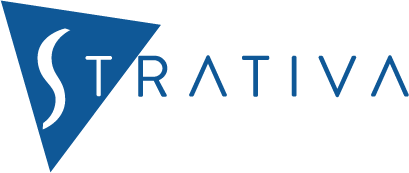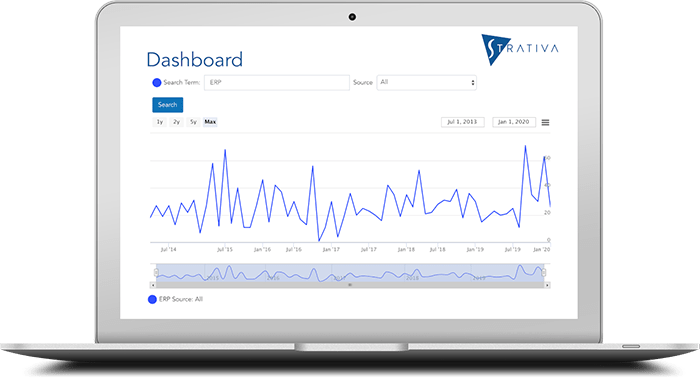
After more than a decade of acquisitions, Infor is now the world’s third-largest enterprise software vendor, following SAP and Oracle. In the past, it has been easy to characterize Infor as a roll-up of older ERP products and point solutions. But that view is no longer fair.
Beyond Acquisitions to Innovation
Under the leadership of CEO Charles Phillips and his mostly new team of senior executives, Infor is now moving beyond acquiring other products to producing innovation on several fronts:
- Hook & Loop: an in-house design agency, which has brought a fresh modern user interface across all of Infor’s products, embracing mobile devices as well as desktops. With Hook & Loop, Infor can now also provide design services to its clients, an unusual competency among enterprise software providers.
- Infor ION: a light-weight middleware capability, which allows quick integration between Infor’s many products as well as third party solutions.
- Ming.le™: a comprehensive solution for social business, process improvement, and analytics.
- Deep vertical functionality, covering dozens of industries, sub-industries, and micro-verticals. For example, where some vendors might list “Food and Beverage” as a vertical, Infor makes a distinction between “Beverage,” “Bakeries,” and “Confectionery.”
- CloudSuite: industry-specific suites of Infor products pre-integrated and deployed as cloud services, comprising five industries today with more on the way. It also includes the newly announced CloudSuite Corporate, which covers horizontal applications such as finance, human capital management, and purchasing.
- Data Science Lab: a newly formed group, which will develop advanced analytics capabilities across Infor’s product suite as well as offer data analytics services to Infor customers, which might otherwise be out of their reach. The group is based near MIT and includes data scientists, mathematicians, economists, and others with analytical skills that are beyond the reach of many Infor customers.
These strategic initiatives go beyond market messaging. In fact, until now, Infor has been deliberately muted in its market communications on these innovations, waiting until it had substantive product and capabilities to deliver. Expect to hear more from Infor in its public messaging on these innovations.
But Infor is Losing Customers
Nevertheless, while Infor is newly invigorated around innovation, the majority of its customers are stuck in the past. Many of Infor’s products were originally developed more than 20 or even 30 years ago, and it is safe to say that a good percentage of the customers of those products have not upgraded since Infor acquired them.
The first and obvious risk to Infor is that such customers may be lost to competitors. Infor does not publish attrition numbers, but some simple arithmetic shows that Infor has actually lost customers over the past four years.
Here is the calculation. When Charles Phillips was named as CEO in October 2010, Infor indicated that it had over 70,000 customers. At this year’s Infor user conference, Inforum, exactly four years later, Infor gives its customer count as 73,000. However, during these four years, Infor has made a number of acquisitions. The largest of these was Lawson Software, which Infor acquired in 2011. At that time, Infor said that Lawson had more than 4,500 customers and that 9% of Lawson’s active customers were also users of Infor products. That would be a net addition of approximately 4,100 customers.
So, if we add the 4,100 customers from Lawson to the 70,000 customers Infor claimed in 2010, we come up with 74,100, which is 1,100 more than the 73,000 customers that Infor now claims. The loss of customers is undoubtedly greater, as Infor has done four smaller acquisitions since 2010, apart from Lawson. Bottom line: Infor’s new customer wins are not even keeping pace with existing customer attrition.
Two recent examples from our consulting experience at Strativa illustrate the problem.
- An aerospace and defense manufacturer contacted us last year about doing a new ERP selection. This customer is running an older version of an Infor product that was installed in the early 1990s. The company customized that product with changes to deal with the Y2K century-dating problem, and it has not upgraded since. The company may consider a migration to the current version of their Infor system, but it also wants to look at other alternatives.
- We recently completed an ERP selection for another company, a midsized manufacturer, which is running an older version of another Infor product, again, highly modified. Although we short listed Infor products for consideration, there were few advocates among users to continue with Infor. This client has tentatively decided in favor of Microsoft Dynamics and has started a proof-of-concept as the next step.
In briefings with other vendors, nearly every one of them lists Infor’s customer base as a target for new business. In fact, Phillips noted during his recent keynote at Infor’s user conference that NetSuite had sent people into the audience to recruit Infor customers. (What’s good for the goose, is good for the gander. Infor apparently had gotten wind of NetSuite’s tactic and had inserted a slide with a special offer for NetSuite customers to migrate to Infor.)
NetSuite’s guerilla marketing tactics are unlikely to produce real leads for new business. If NetSuite wants to target Infor customers, the best targets are not the 6,000 attendees at Infor’s user conference. Conference attendees represent those customers who are actively engaged with Infor. Those are the ones who are either on current versions or considering to get there—or they are new prospects altogether. The Infor customers that competitors should be targeting are those who stayed home.
Customers Unable to Benefit from Infor’s Innovations
There is a second problem with so many Infor customers being on older versions, and that is that they are in no position to take advantage of all of Infor’s new innovations. Because they are on older versions, they cannot get Infor’s new user interface, they cannot take advantage of ION for integration, their users cannot collaborate with the capabilities of Ming.le™, and they cannot benefit from the deep industry functionality that Infor has been adding to its products over the past several years.
From Infor’s perspective, these are lost opportunities to up-sell and cross-sell additional Infor products to these customers. From the customer’s perspective, there is diminished value from their past investments in Infor products, making them question why they are paying maintenance. This again opens them to abandoning ship for competing products.
Upgrading Customers Is the Critical Path to Success
If it is not apparent by now, getting customers to upgrade to current versions is absolutely essential to Infor’s success. Infor realizes this, and over two years ago it launched an initiative it calls UpgradeX.
The features of UpgradeX are aimed at making version upgrades a no-brainer for customers:
- Value engineering: Infor will analyze the customer’s existing deployment and quantify the business value of eliminating modifications and upgrading the applications.
- Version upgrades: The service will move the customer to the current versions of its Infor products, which can be a daunting project for customers that are behind many versions. Infor’s website doesn’t make it explicit; Infor may also allow customers to switch to a more appropriate Infor product.
- Cloud deployment: Infor uses its cloud to bring up a sandbox version of the new system quickly for the customer to prototype and understand the new version. Infor then migrates and deploys the target solution as a cloud service, assuming day-to-day responsibility for operating the system.
- Bundled professional services: Infor provides all the consulting services required to accomplish the upgrade or migration. User training is provided online.
- Ongoing upgrades and support: UpgradeX will not be a long-term solution if newly upgraded customers fall behind again on upgrades. The offering therefore includes services to keep customers current on new versions.
The UpgradeX program has recently been assigned to Lisa Pope, Senior VP of Infor CloudSuite, who appears to be a great pick for the job. She came within the last year to Infor from QAD, where she was VP of Strategic Accounts. Interestingly, QAD was earlier than most traditional ERP vendors in offering a cloud or hosted deployment option, beginning in 2007. According to a recent Computer Economics report on cloud ERP providers, QAD’s ERP subscription revenue now is in the neighborhood of 10% of its total revenue, which puts it at the high end of what most traditional ERP vendors have been able to achieve to date. In her role at QAD, Lisa was instrumental in this transition. She will need to build on her past experience and move even more aggressively to accomplish an even greater transformation with Infor’s installed base.
Infor Customers Should Consider UpgradeX
Some Infor customers on older versions are determined to go with a different provider. Such customers should first take a look at UpgradeX. In many cases, they are not familiar with the innovations Infor has introduced, and they do not understand that they may be able to get upgraded quicker than they think.
Even Infor customers who have gone off maintenance should consider UpgradeX. Vendors hate to lose customers. If there is a way to recapture a customer that has gone off maintenance, a vendor is likely to make an attractive deal to do so, especially if the customer is also looking at competing products.
It is often simpler to upgrade a system that users are familiar with than to migrate to a completely new system, which reduces implementation risk. Moreover, with Infor’s value engineering services, the opportunity to eliminate or reduce modifications can also lead to longer-term savings, as the customer will no longer need to support those customizations.
One word of caution: we were not able to interview any UpgradeX customers during Infor’s user conference, so we are not able to verify the results that Infor promises. In any event, UpgradeX so far has only touched a small percentage of Infor’s installed base. For Infor to really move the needle, UpgradeX needs to rapidly scale up to thousands of customers, not the hundreds it has now. There does not appear to be any ERP provider that has ever been able to make such a massive impact on its legacy customers, but Infor’s UpgradeX program certainly has all the pieces in place to do so. For Infor’s sake and its customers, we hope it is successful.

